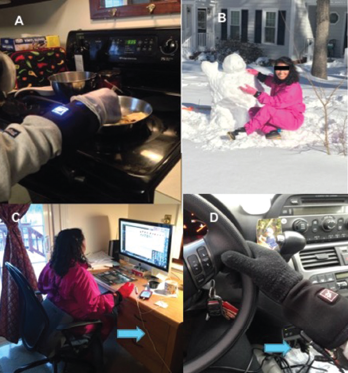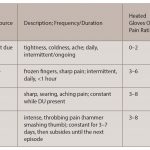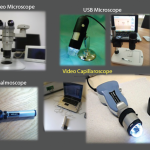According to Carol Tresolini and the Pew-Fetzer Task Force at the University of California, San Francisco, “To be therapeutic, the relationship between healer and patient should have as its foundation a shared understanding of the meaning of the illness.”21
Medical providers have focused primarily on the major medical complications of dSSc and, thus, most often prescribe medications.13,16,18,22 However, patients with dSSc focus on pain and function.12,18 Raynaud’s and digital ulcers are devastating for people who are often working, caring for themselves or caring for others. Loss of function and inability to go outdoors in the cold limit both work and family activities.
Multiple modalities have been investigated to address hand limitations in dSSc, including heat, paraffin, gloving and stretching exercises.23-27 However, in research studies, heat is typically applied for short durations of 15 to 20 minutes. Moreover, few, if any, studies address the effects of heat on pain, Raynaud’s, ulcers or acro-osteolysis.
Historically, researchers formulate research questions and design a study to answer those questions. Participant input is minimal. More recently, groups including PCORI (Patient-Centered Outcomes Research Institute) and SPIN (Scleroderma Patient-Centered Intervention Network) have spotlighted the need for research studies to focus on outcomes meaningful to the patient population.12,28 In dSSc, as well as other major life-threatening and life-changing illnesses, patient-centered approaches offer a unique opportunity for patients to participate in their own care and inform designs for future research, including research questions, interventions and outcomes.12,28

Figure 2: Heated Gloves in Action
The heated gloves can be worn alone or under other gloves. They are shown here (A) covered with vinyl gloves during cooking, (B) covered with knit and vinyl gloves to make a snowman (45 minutes), powered by a wall adapter for home (C) and a car adapter while driving (D) (blue arrows).
Barb, a healthcare professional and patient with dSSc, undertook a personal study examining the use of continuous superficial heat via battery-operated heated gloves. Use of continuous superficial heat has not been investigated and may provide beneficial results for patients with dSSc. She researched the topic through publicly available online databases, including PubMed, and used her clinical and personal experiences using heat to address pain, Raynaud’s, DU and range of motion (ROM) to formulate her research question and to design a study to answer the question.
Research question: How does the prolonged application of heat affect digital pain, ulcer development and hand function in a patient with dSSc?
Case Study
History: Barb, a 50-year-old physical therapist, developed Raynaud’s phenomenon in December 2008. Immediately thereafter, in January 2009, she developed severe bilateral carpal tunnel syndrome. After undergoing bilateral carpal tunnel releases, the neurological symptoms resolved, but tightness and swelling in the hands continued.


